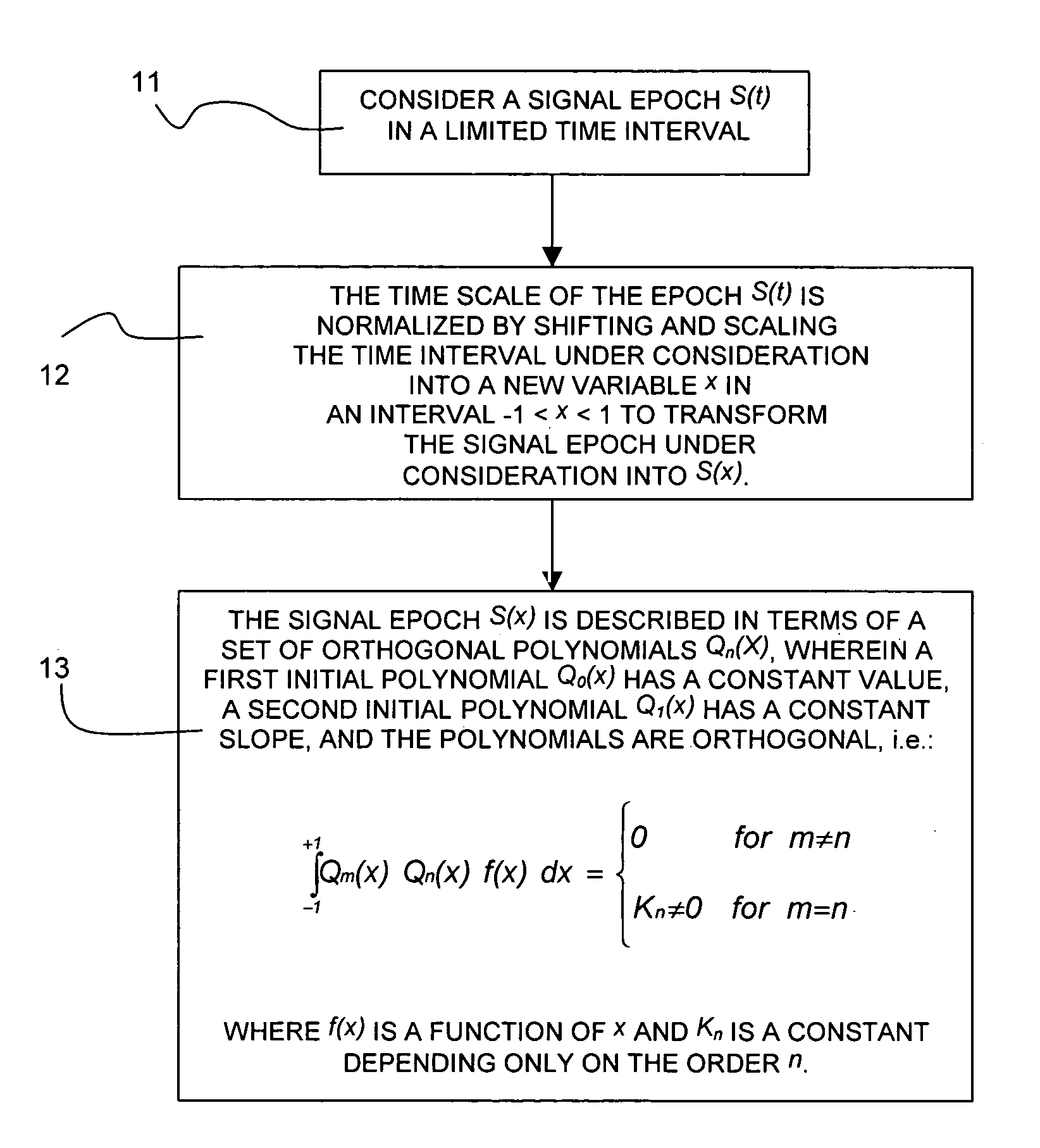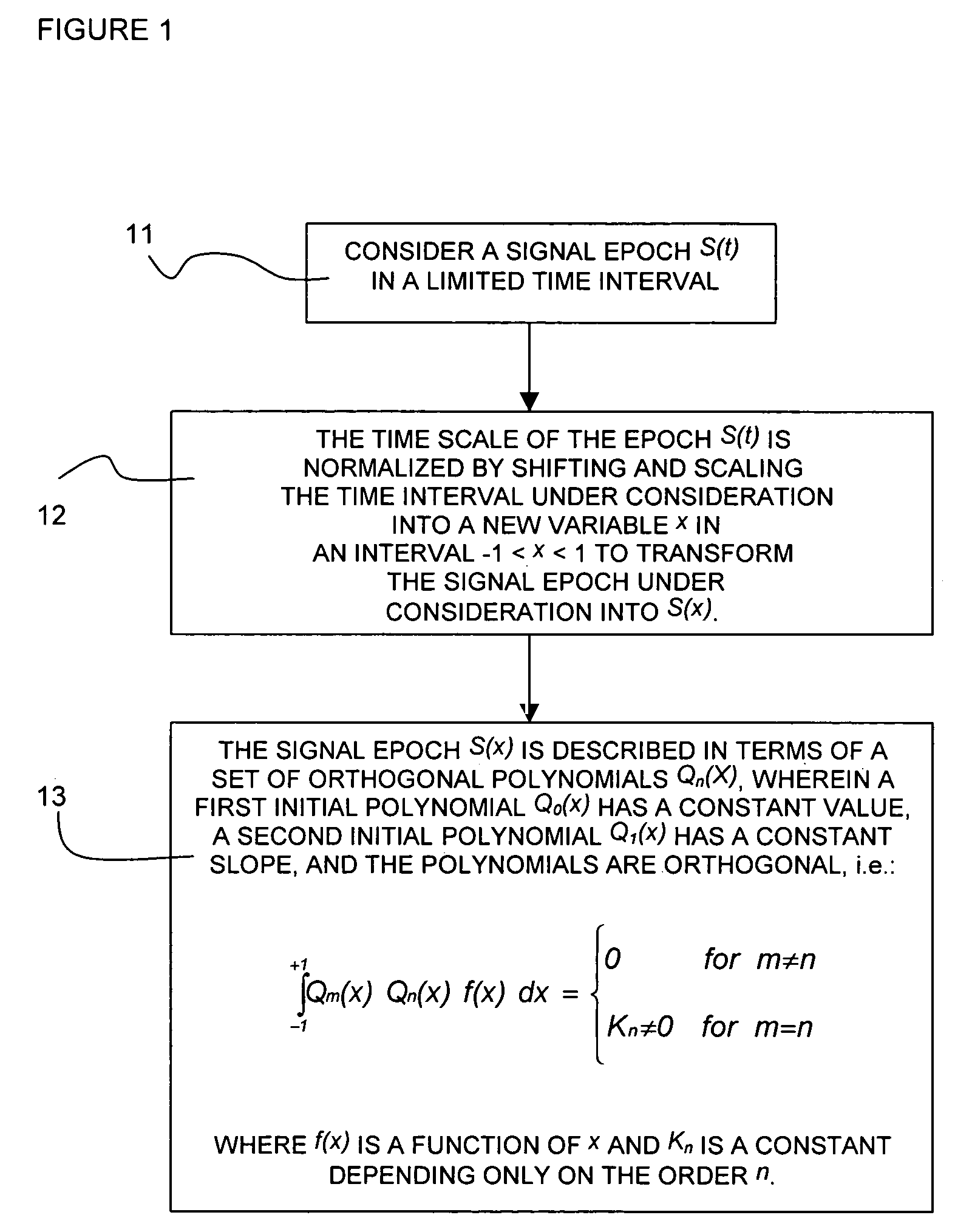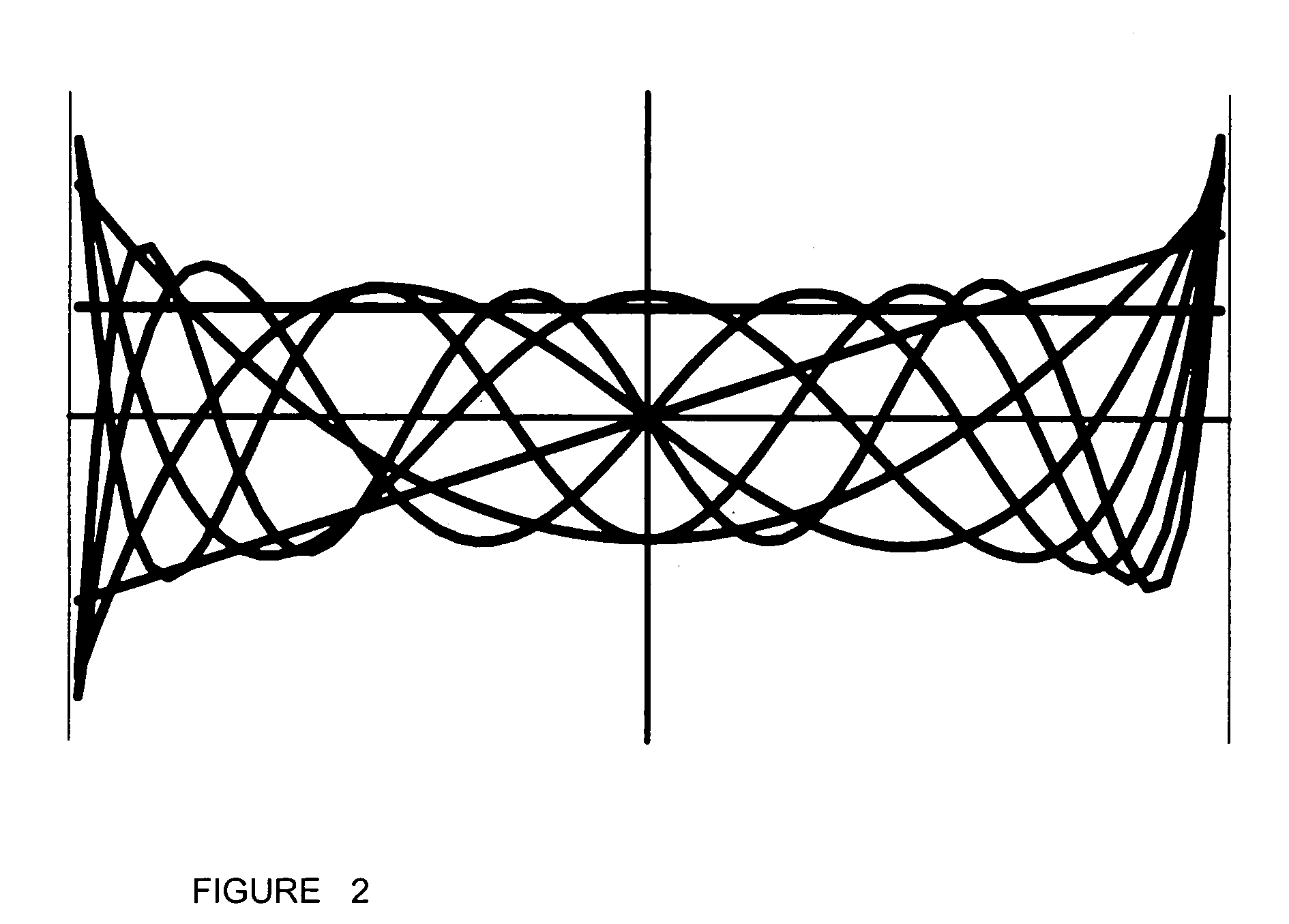Signal filtering using orthogonal polynomials and removal of edge effects
a signal filtering and orthogonal polynomial technology, applied in the field of filtering an input signal, can solve the problems of noise component, ecg is likely to disturb an emg signal, time representation of an emg signal is thus complex,
- Summary
- Abstract
- Description
- Claims
- Application Information
AI Technical Summary
Benefits of technology
Problems solved by technology
Method used
Image
Examples
Embodiment Construction
[0065]From the analysis of the EMG signals, ECG signals, movement induced disturbances, background noise, and interference from the mains made in the “background of the invention” of the present specification, the following conclusions can be drawn:[0066]The “a priori” knowledge of the input signal could be used for designing the filtering technique. One example is the interference from the mains, which has substantially sinusoidal shape and fixed frequency.[0067]The filtering technique could model the disturbances, offsets, trends, noise, etc., in a more efficient manner than the Fourier transform is capable of. Other functions requiring a smaller set of terms could be used to more efficiently model the essential features of the signal.[0068]DC components could be removed from finite length epochs since these components have frequencies lower than the lowest frequency associated to the epoch.[0069]Trends could be removed from the signal. The reason for this time domain processing i...
PUM
 Login to View More
Login to View More Abstract
Description
Claims
Application Information
 Login to View More
Login to View More - R&D
- Intellectual Property
- Life Sciences
- Materials
- Tech Scout
- Unparalleled Data Quality
- Higher Quality Content
- 60% Fewer Hallucinations
Browse by: Latest US Patents, China's latest patents, Technical Efficacy Thesaurus, Application Domain, Technology Topic, Popular Technical Reports.
© 2025 PatSnap. All rights reserved.Legal|Privacy policy|Modern Slavery Act Transparency Statement|Sitemap|About US| Contact US: help@patsnap.com



